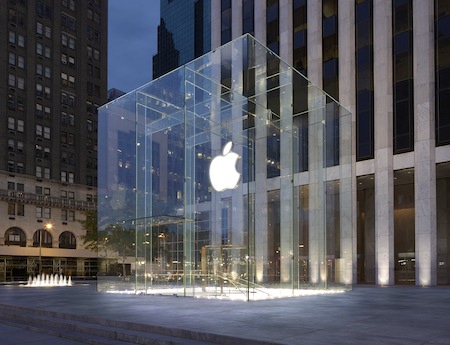Apple’s 9/9 Event: 4 Things for TV Execs to Watch

Rumors are always cheap and frequently easily forgotten in hoopla following big Apple tech announcements, but behind all the speculation, there are four key areas that TV executives should be thinking about as Apple unveils some new gadgets on September 9th.
1. Apple TV.
Almost everyone seems sure that Apple will finally upgrade its Apple TV box for the first time in three years. (But then many writers were certain it would happen at the March event earlier this year and at many of the events held in 2014.)
Conventional wisdom also holds that the launch of an Apple over-the-top video service—something the Wall Street Journal and other outlets have been regularly predicting since 2008—will, however, be delayed until 2016.
Even so, upgrades to the hardware are important. Live TV and connected TVs have become much more central part of everyone’s app and digital strategy and any improvement to a popular streaming device like Apple TV is big news.
Much of the betting seems to be that the hardware upgrades will be focused on adding new gaming features and on whether those improvements could bump prices up above $100 to as much as $149, a big jump from the current $99 price.
If so, the gaming features could open up new opportunities for casual games by TV nets, particularly kid specialists, but the price tag might be hard for consumers to swallow, given the widespread availability of streaming players for under $50 from Roku, Google and Amazon.
Broadcasting & Cable Newsletter
The smarter way to stay on top of broadcasting and cable industry. Sign up below
Improvements to processing power will also be worth watching. And any improvements in the user interface may provide clues as to what Apple hopes to accomplish if it does finally launch its own OTT service.
Here, many believe that Siri and greatly improved voice capabilities will play a big role with improved search, a tactic already being used by cable operators like Comcast in some of their remotes.
2. Smartphone Fatigue.
It is a sure bet that Apple will be announcing new high-end phones, likely the Apple 6S and 6S Plus, in the run-up to the holiday shopping season.
While smartphones are everywhere and hugely important to any content strategy, sales have been leveling off and there are fewer and fewer things that really distinguish high end devices. CNET has aptly described this development as “smartphone boredom.”
So the big question will be whether Apple can once again come up with something that will really wow consumers.
That won’t be easy but for working journalists, it may succeed in launching a very impressive newsgathering tool. MacRumors.com is predicting that the new phones will come with an improved camera that can do 4K recording.
Another widely tipped feature is the Force Touch, which is already available on the Apple Watch. It measures how hard a person is touching the screen, which in turn would open up new doors for app developers.
3. Bigger is Better: the iPad Pro?
Another widely expected launch could be a much big tablet, an iPad Pro with a 12 or 13 inch screen, which would make it the size of a laptop.
In a time when tablet sales have been stagnating, the new device would obviously attract some consumers who otherwise might have opted for a laptop. The big screen would also be ideal for viewing video, though may not be something everyone would want to carry around.
4. HEVC to the rescue?
In the run-up to the event, tech writers aren’t spending much time on whether the new Apple smartphone will be able to natively handle HEVC, or high efficiency video coding, the newest compression standard.
But this bit of inside baseball, is really important for pretty much everyone who wants to deliver content over wireless and other networks with severely limited bandwidth.
Proponents of HEVC promise that it will eventually allow bandwidth savings of 50% versus the MPEG-4 or H.264 scheme currently widely used in digital media, which in turn could make it much more cost effective to deliver HD or 4K content over mobile networks. It would also make it much easier for journalists using the new iPhone 6 to send back the 4K video it is expected to be able to record.
The Apple iPhone 5 seemed to include HEVC in its specs but it wasn’t enabled and there remain some hurdles to implementation of HEVC in newer devices. The intense computing power needed to produce bandwidth savings of up to 50% from MPEG-4 compression does rapidly drain batteries. (The new A9 chip that many writers seem to think will be part of the iPhone 6 might help overcome this.) Also, Apple may balk at the licensing fees, though most tech vendors tell B&C that isn’t a major problem.
